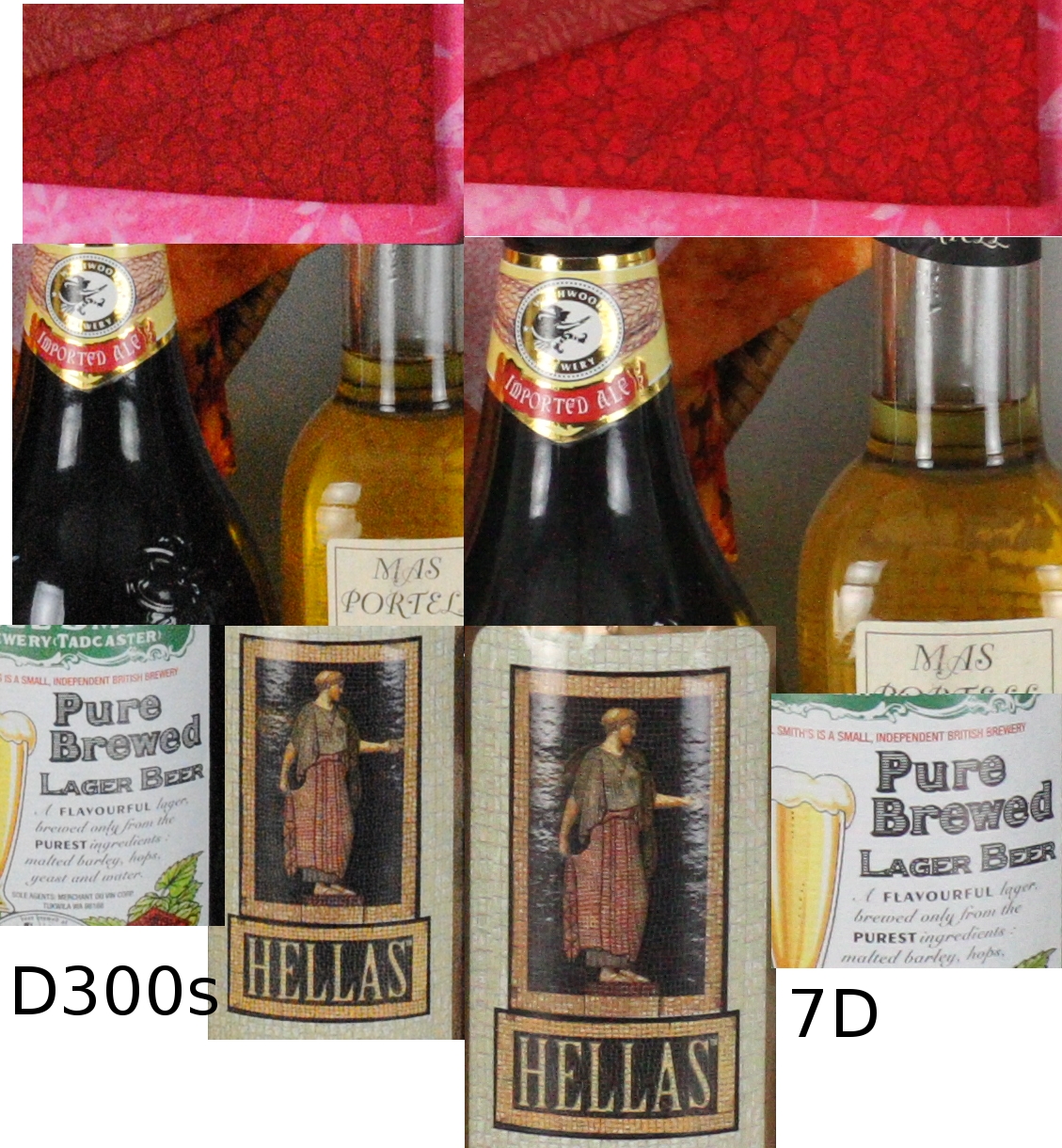As a start, with the release of 7D, Canon seems to have managed to match (or exceed) almost every single aspects of the D300/D300s specification....at least on paper.
However, experience told us that what's on paper does not always translate to better image quality. For example, the 50D's gapless-microlens technology was supposed to give better high ISO performance but never really delivered what was promised. Canon fans have been waiting anxiously to see what the image quality of the 7D will be like. Will it be another disappointment?
Will Canon be able to squeeze in 20% more pixel into the 7D, making it 18mpx while at the same time, improving the high ISO performance up to the point that it matches the D300s, Nikon's latest? Sounds impossible... doesn't it?
I thought so too. Then a discussion on dpreview sparked some hope...
I began to make own observation of the image samples from ISO 1600 - ISO 6400. Finally, I picked the set from ISO 3200. Why ISO 3200?
ISO 3200, in my opinion is the most crucial battle front for high ISO supremacy. Most of the current crop of APS-C dSLR show only minor differences at ISO 1600, while ISO 6400 is normally too noisy to make any conclusive observations.
I also chose images with NR-OFF. This is because I am more interested to compare the 'raw' sensor performance rather than NR strategies.
Here are the crops of the images I was looking at, from imaging-resource.com
(click image for full sized version)
Images at ISO 3200
Noise Reduction - OFF
JPEG Mode
credit: imaging-resource.com (please make donations to imaging-resource.com)

My observations:
- Noise - The D300s is significantly noisier than the 7D. The red cloth swatch is grainier on the D300s than on the 7D. Also, the gray area between the two bottles is grainier on the D300s. The 7D remains reasonably clean while blotches (caused by chroma noise) start to appear on the D300s output, especially on the gray area between the two bottles.
- Details - When a camera produces clean images at high ISO, it does not necessarily mean that it has better ISO performance. It could be that by default, it applies a strong NR (yes, some cameras do that even when NR is OFF.... hellooo Sony). If that was true, then details would likely be smeared. However, this does not seem to be the case here. The details of the 7D is still notably better than the D300s. For instance, the 7D retains very good details on the red swatch. Veins on the red leaves are still visible and they are visibly better than those produced by the D300s. Moving down to the lower images, 7D retains the horizontal lines on the word 'Pure Brewed' almost perfectly while in the D300s output, the horizontal lines are already blurred. Similarly, the 7D kept visibly better details on the HELLAS bottle, the mesh pattern on the black background has been well retained. On the other hand, the D300s starts to smudge the label and yellowish patches begin to appear bellow the word 'HELLAS'.
- Color - The other effect of high ISO is reduced color intensity and decreased Dynamic Range. Looking at the red swatch, the 7D still produced vibrant red color while the D300s starts to produce visibly duller color. However, the D300s still produces a more saturated yellow for the liquid in the bottle. Overall, the Canon retains much of the color at this ISO, edging out the Nikon.
- The Canon image is definitely the cleaner of the two. Ofcrouse, there is a possibility that Canon apply some NR even though the NR is set to OFF. Whatever Canon is doing, for sure it is not at the expense of image details.
- The details of the Canon image at ISO 3200 is simply stunning. In most key areas, the Canon is out resolving the 12mpx sensor. This is by no means an easy feat (Remember that the G10 lost out to the LX3 in terms of details at high ISO, despite having 40% more pixels.)
- Unlikely as it seems, especially with the recent disappointment with the 50D, Canon has managed to do the impossible - adding 20% more pixels to a sensor while improving the high ISO performance to a level at which it not only beat its predecessor, it actually matches or possibly even beat Nikon's latest and greatest APS-C camera, the D300s.
No comments:
Post a Comment